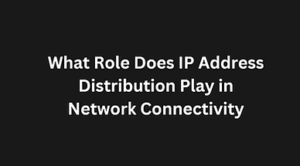Guide to DDoS Mitigation Strategies
In today’s hyper-connected world, Distributed Denial-of-Service (DDoS) attacks have become one of the most common threats to businesses, organizations, and individuals. These attacks can overwhelm websites, networks, and servers with traffic, causing downtime, financial loss, and damage to reputation. However, with proper mitigation strategies in place, organizations can effectively reduce the risk and impact of DDoS attacks. In this guide, we’ll explore some key DDoS mitigation strategies and how they work.
Understanding DDoS Attacks
Before diving into mitigation strategies, it’s important to understand what a DDoS attack entails. A DDoS attack occurs when multiple compromised systems, often from around the world, are used to flood a target with excessive amounts of internet traffic. The goal is to make the target’s network or service unavailable to legitimate users, thereby disrupting operations.
There are different types of DDoS attacks, including:
Volumetric Attacks: These attacks aim to saturate the target’s bandwidth with massive traffic, such as ICMP floods or DNS amplification attacks.
Protocol Attacks: These attacks exploit weaknesses in network protocols, such as SYN floods, to exhaust server resources.
Application Layer Attacks: These are more targeted attacks that overload specific applications, such as HTTP requests, making it difficult to distinguish between legitimate and malicious traffic.
Mitigation Strategies
1. Network Redundancy and Scalability
One of the most effective ways to mitigate the impact of a DDoS attack is by ensuring your network is redundant and scalable. Redundancy refers to having backup systems in place so that if one part of the network goes down, another can take over. This can be achieved through techniques like load balancing, which distributes traffic evenly across multiple servers.
Scalability ensures that your infrastructure can handle sudden surges in traffic. By utilizing cloud-based services that provide elastic scaling, organizations can dynamically add resources during a DDoS attack to absorb the extra traffic and prevent service disruption.
2. Traffic Filtering and Rate Limiting
Another key strategy is to implement traffic filtering and rate limiting mechanisms. Traffic filtering involves analyzing incoming traffic and blocking malicious requests before they reach the target server. Firewalls and intrusion prevention systems (IPS) can be configured to automatically identify and reject traffic from known bad IP addresses.
Rate limiting, on the other hand, helps control the number of requests a user can send within a given timeframe. This is particularly useful for mitigating application layer attacks, which often involve overwhelming the target with a high volume of specific requests.
3. Content Delivery Networks (CDNs)
A Content Delivery Network (CDN) is a distributed network of servers designed to deliver content to users based on their geographic location. CDNs are commonly used to cache and deliver static content such as images, videos, and web pages, but they also play an essential role in mitigating DDoS attacks. By distributing web traffic across multiple servers worldwide, CDNs can absorb large amounts of malicious traffic, ensuring that only legitimate requests reach the origin server.
4. DDoS Protection Services
Many third-party DDoS protection services specialize in detecting and mitigating attacks. These services offer cloud-based DDoS protection by monitoring traffic patterns and filtering out malicious traffic in real-time. Some well-known providers, such as Cloudflare, Akamai, and Amazon AWS Shield, offer comprehensive protection against a wide range of DDoS attacks.
5. Anomaly Detection and Behavior Analysis
Anomaly detection systems use machine learning algorithms to analyze traffic patterns and detect unusual spikes that might indicate a DDoS attack. These systems can identify threats before they fully materialize, allowing for quicker responses to mitigate potential damage. By analyzing normal user behavior, anomaly detection tools can distinguish between legitimate traffic and attack traffic, enabling a proactive defense.
6. Blackhole Routing and Sinkholing
Blackhole routing and sinkholing are techniques that involve redirecting malicious traffic away from the target system. In blackhole routing, all traffic destined for the targeted network is dropped at a router, preventing the attack from reaching the target server. Sinkholing, on the other hand, redirects the malicious traffic to a “sinkhole” server where it is analyzed and neutralized.
Conclusion
DDoS attacks are a growing concern for organizations across industries, but by implementing a combination of effective mitigation strategies, businesses can significantly reduce their risk. The key is to remain proactive, regularly test your defenses, and stay informed about the latest threats. Network redundancy, traffic filtering, CDNs, third-party DDoS protection, anomaly detection, and sinkholing are just a few of the strategies that can help safeguard against these disruptive attacks. By investing in robust mitigation measures, organizations can ensure their networks remain secure and operational even in the face of a DDoS threat.



